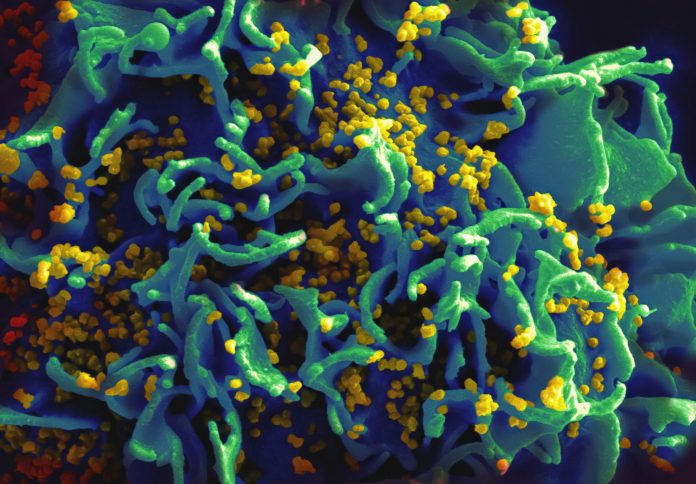Antimicrobial resistance threatens human lives, economies and the planet. Industry leaders can join the fight against this global health crisis by learning more about risks and solutions and adjusting their business practices accordingly.
People have been searching for effective health treatments since the dawn of time. The invention of antimicrobials was a crucial step in minimising preventable deaths with tools like penicillin.
Unfortunately, bacteria have adapted to the threat to their reproduction.
The resulting antimicrobial resistance is a growing concern for people and economies. Leaders in any industry can mitigate the damage by learning about this global health crisis and determining better ways to fight it within their businesses.
What is antimicrobial resistance?
Antimicrobial resistance describes the ability of microscopic organisms to resist treatments like antibiotics, antiparasitics, antifungals and antivirals. Every living thing adapts when faced with challenges. It’s the foundation of evolutionary theory, so it’s natural for such organisms to try to survive more effectively.
In learning how to do so, antimicrobial tools are becoming less effective. Microbes are also developing genetic changes to survive those tools and become untouchable. As microbes reproduce, all living things become more at risk of more powerful bacteria and viruses that resist all known treatments.
An overuse of antibiotics contributed to this problem, made worse by patients not completing antibiotic prescriptions and leaving bacteria and viruses alive after antibiotic exposure.
Experts estimate that the growing health crisis of antimicrobial resistance will cause over 39 million deaths between 2025 and 2050. People will likely die due to untreated infections but also due to untreatable illnesses after undergoing chemotherapy and surgery. The environment is also at risk because the stronger microbes will reproduce outside of human populations, eventually seeking animals and plants as hosts.
How long has the world known about this global health crisis?
Antimicrobial resistance has been a threat since the early 21st century, when the widespread availability of antibiotics peaked. The same research notes that experts found the final antibiotic class in 1987. Antibiotics became available globally with little to no regulation, leading to widespread distribution and use and ultimately contributing to the current state of antimicrobial resistance.
How antimicrobial resistance could affect the world
As more microbes become resistant to effective treatments, people must know how to protect those who are most at risk. Learning about the most likely outcomes will empower leaders in business, medical and sustainability-focused industries to lead the fight against untreatable microorganisms.
Increased death tolls
Mutating viruses and bacteria doesn’t just pose a risk to people in close proximity to each other. They also hurt patients recovering from medical procedures. Medical experts estimate that 90% of surgical wounds require up to six months to finish healing, providing ample opportunity for an open wound to remain vulnerable to mutated microorganisms.
Additionally, it takes time to develop new medical treatments. Treatments must undergo multiple rounds of studies and peer-reviewed testing before human trials begin. Microorganisms mutate at an accelerated rate, leaving people suffering from illnesses for an extended period while the medical community attempts to catch up to new health threats with revolutionary treatments.
The slow pace of medical advancements leaves vulnerable populations at risk from conditions that were treatable before antimicrobial resistance became a global health crisis.
Higher healthcare costs
Antimicrobial mutations might increase healthcare costs in numerous ways. First, mutations can resist treatments, so people will likely take longer to recover than they used to and rely more extensively on additional medical care. The higher demand for treatment might overload the healthcare system.
The increase in demand for appointments and effective treatments can also increase the cost of care, a reality many people are already experiencing across the world.
Countries with national healthcare systems may have to invest more taxpayer money into studies to find solutions to antimicrobial resistance in the future. This may lead to tax increases on the general public. Researchers will need to keep up with technological advances and work under intensive time pressure. A medical breakthrough would lower infection risks and treatment costs in the long run but requires upfront investments.
Healthcare for animals may increase for the same reasons. If more animals require veterinary services, those treatments will increase in price relative to demand.
Adapted business strategies
Businesses outside of the healthcare industry must also adapt to challenges related to antimicrobial resistance. If more individuals leave the workforce due to illness or death, companies may struggle to maintain quarterly revenue without adequate support.
Additionally, many people may lack sufficient disposable income if the unemployment rate remains high. They’ll likely spend less money to prioritise necessities. The drop in revenue in any industry could threaten a business’s future.
Increasingly necessary microbial tool regulations make antimicrobial pesticides more costly in the U.S. These higher prices may increase with time in an effort to slow the use of biocides. When manufacturing or production costs rise, business owners may struggle to retain their employees, maintain competitive pricing and remain open.
How experts are reacting to antimicrobial resistance
Leaders are already working to combat antimicrobial resistance worldwide. The World Health Organization (WHO) has approved 70 national action plans in various countries. Private sector coalitions like the Antimicrobial Resistance (AMR) Industry Alliance also funds research into solutions to mitigate the growing health crisis.
There are multiple tools at our disposal, including rapid diagnostics to quickly spot infections and ensure people receive timely medical interventions.
AI-driven technology is also aiding drug discovery by creating treatments that kill microbes without the threat of potential resistance in future microorganisms. Bacteriophages that kill bacteria with viruses and antimicrobial peptides are among the many therapies showing positive signs in the development phase.
Why business leaders should be aware of antimicrobial resistance
Business leaders should remain closely tuned in to this global health crisis for multiple reasons. First, avoiding the misuse of antibiotics safeguards the supply chains in each industry. Treating crops with more effective pesticides minimises the risk of collapse in agricultural production due to future untreatable viruses or bacteria.
Healthy workers will also remain active in the workforce for longer durations. Companies face fewer threats of labour loss, rising unemployment and a lack of consumer-generated revenue when the population at large is healthy.
Sustainability-focused businesses have unique opportunities to aid the fight against antimicrobial resistance. Holistic approaches to agriculture and meat production may eliminate the need for antibiotics in many cases. Healthier feed, organic fertiliser and sustainable maintenance routines will aid disease prevention.
Technology-focused companies might shift their focus to developing tools researchers need to find alternatives to antibiotics. They can also push for making specific technologies more widespread, like increasing the availability of AI-driven software that catches infections and marketing them toward healthcare resources of all sizes.
Eco-friendly brands in pharmaceuticals and health care often push for change by supporting updated business practices. Incentivising research opportunities, implementing milestone payments for developing antibiotics and following new patient care procedures to prevent infections more effectively can all help solve the crisis.
Working towards a better future in any industry
Business leaders can fight antimicrobial resistance in any industry by staying closely informed of the latest developments, spreading awareness of the health crisis and investing in relevant research. It will take a global response to manage an ever-growing challenge affecting people worldwide.









